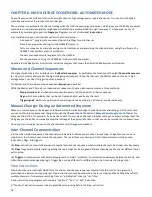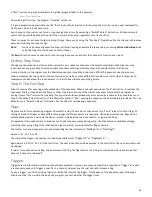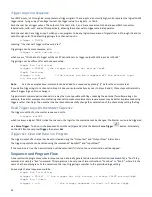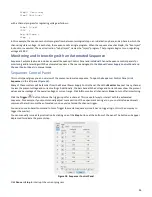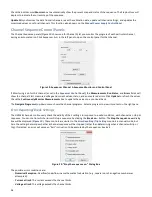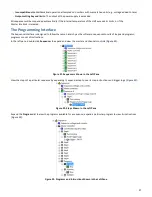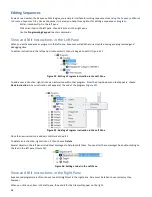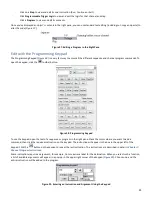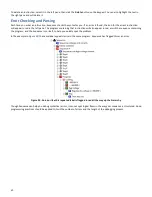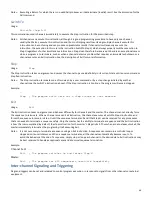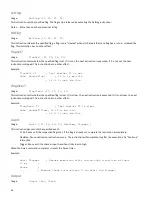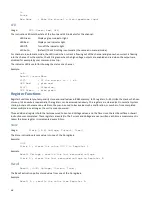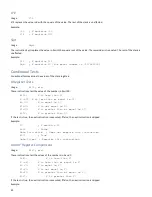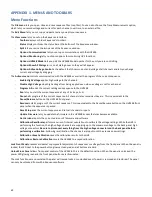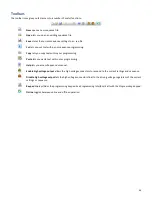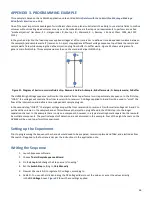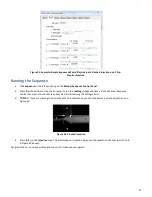
36
1s
Pause
Reg None
; Make the channel a high-impedance input
LED
Usage:
LED {Green, Red, Off}
The instruction LED sets the state of the front panel LED indicator for the channel:
-
LED Green:
Display a green indicator light.
-
LED Red:
Display a red indicator light.
-
LED Off:
Turn off the indicator light.
-
LED Auto:
(Default) The LED setting is automatic (the same as in manual mode).
For channels, in automatic mode, the LED is red when current is flowing out of the channel and green when current is flowing
into the channel. For the master, the LED is green when the high voltage outputs are enabled and red when the outputs are
disabled, for example by user command or a trip.
The indicator LED is useful for showing the status of a channel.
Example:
1mA
Recall CurrentMeas
X>Y?
; If the current is > 1 mA
LED Red
; glow red.
X<=Y?
; Otherwise,
LED Green
; glow green.
Register Functions
Register Functions let you temporarily store and recall values in RAM memory, to 13 registers, A–M. Unlike the stack, which can
store up to 16 numbers sequentially, the registers can be accessed randomly. The registers are cleared (set to zeros) at system
startup, but are otherwise non-volatile so they can be used to track values such as calibration, or number of runs completed,
across multiple runs as long as the unit remains powered.
Three additional registers hold the last measured Current and Voltage values, and the Time since the last ResetTime or Await
instruction was completed. These registers are volatile. The Current and Voltage are over-written each time a measurement is
taken; the timer register is incremented every 0.1 ms.
Store
Usage:
Store [{A–M, Voltage, Current, Time}]
The Store instruction places a value into one of the 16 registers.
Example:
100V
Store A ; stores the value 100 V in Register A
Example
Recall Voltage ; recalls the last measured voltage
Store B ; stores the last measured voltage to Register B
.
Recall
Recall [{A–M, Voltage, Current, Time}]
The Recall instruction pulls a stored value from one of the 16 registers.
Example
Recall A ; recalls the value from Register A.

